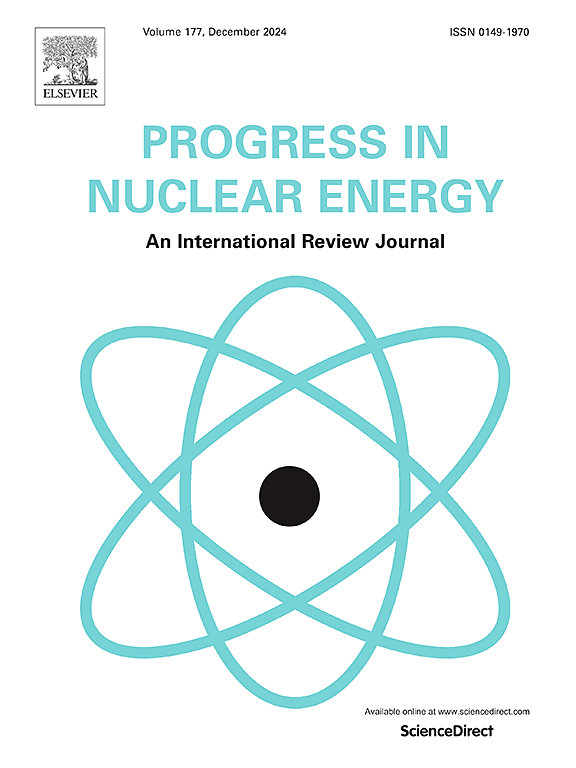Study on the condensation pattern of steam jet under different back pressure conditions
IF 3.2
3区 工程技术
Q1 NUCLEAR SCIENCE & TECHNOLOGY
引用次数: 0
Abstract
In the practical application of engineering, the phenomenon of steam underwater immersion jet under high back pressure conditions (>0.1 MPa) exists. However, most of the current research on steam immersion jet condensation flow patterns and their boundaries is conducted under atmospheric pressure conditions (0.1 MPa). The applicability of condensation flow patterns and related prediction formulas derived under atmospheric pressure to high back pressure conditions remains to be validated. Based on the experimental research, the condensation pattern of steam underwater immersion jet under different back pressure conditions is identified, and the condensation behavior of the jet under different back pressure conditions is clarified by comparing and analyzing the visual images and dynamic pressure characteristics of different condensation flow patterns, and the influence law of back pressure and other parameters on the condensation flow pattern boundary is mastered. This study fills the gap in the research of steam underwater immersion jet under the condition of high back pressure, which has important scientific research significance and engineering application value.
不同背压条件下蒸汽射流凝结规律的研究
在工程实际应用中,存在高背压条件下(>0.1 MPa)蒸汽水下浸没射流现象。然而,目前对蒸汽浸没射流凝结流型及其边界的研究大多是在常压条件下(0.1 MPa)进行的。在常压条件下推导的凝结流型及相关预测公式在高背压条件下的适用性有待验证。在实验研究的基础上,识别了不同背压条件下蒸汽水下浸没射流的冷凝模式,通过对比分析不同冷凝流型的视觉图像和动压特性,明确了不同背压条件下射流的冷凝行为,掌握了背压等参数对冷凝流型边界的影响规律。本研究填补了高背压条件下蒸汽水下浸没射流研究的空白,具有重要的科学研究意义和工程应用价值。
本文章由计算机程序翻译,如有差异,请以英文原文为准。
求助全文
约1分钟内获得全文
求助全文
来源期刊

Progress in Nuclear Energy
工程技术-核科学技术
CiteScore
5.30
自引率
14.80%
发文量
331
审稿时长
3.5 months
期刊介绍:
Progress in Nuclear Energy is an international review journal covering all aspects of nuclear science and engineering. In keeping with the maturity of nuclear power, articles on safety, siting and environmental problems are encouraged, as are those associated with economics and fuel management. However, basic physics and engineering will remain an important aspect of the editorial policy. Articles published are either of a review nature or present new material in more depth. They are aimed at researchers and technically-oriented managers working in the nuclear energy field.
Please note the following:
1) PNE seeks high quality research papers which are medium to long in length. Short research papers should be submitted to the journal Annals in Nuclear Energy.
2) PNE reserves the right to reject papers which are based solely on routine application of computer codes used to produce reactor designs or explain existing reactor phenomena. Such papers, although worthy, are best left as laboratory reports whereas Progress in Nuclear Energy seeks papers of originality, which are archival in nature, in the fields of mathematical and experimental nuclear technology, including fission, fusion (blanket physics, radiation damage), safety, materials aspects, economics, etc.
3) Review papers, which may occasionally be invited, are particularly sought by the journal in these fields.
 求助内容:
求助内容: 应助结果提醒方式:
应助结果提醒方式:


